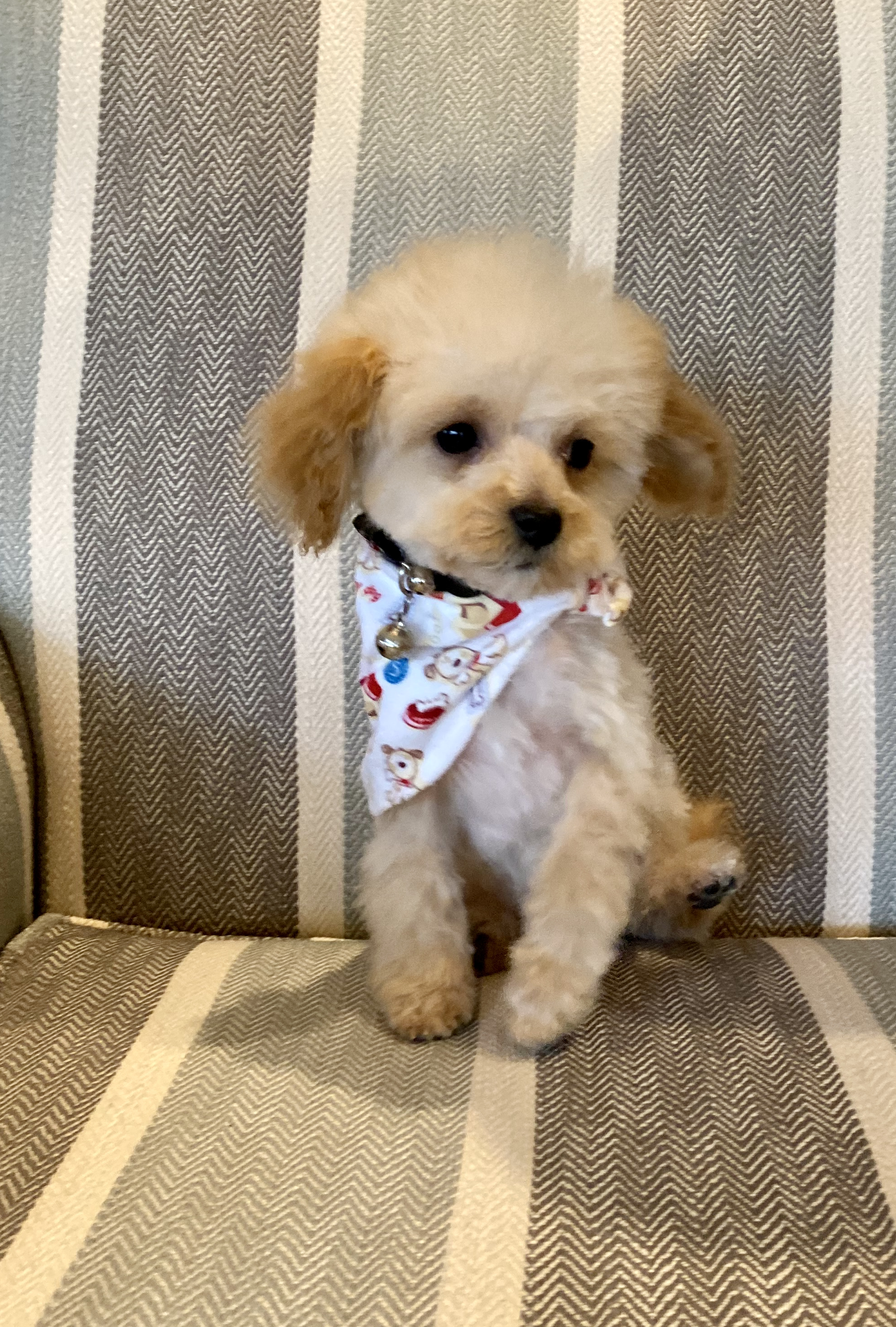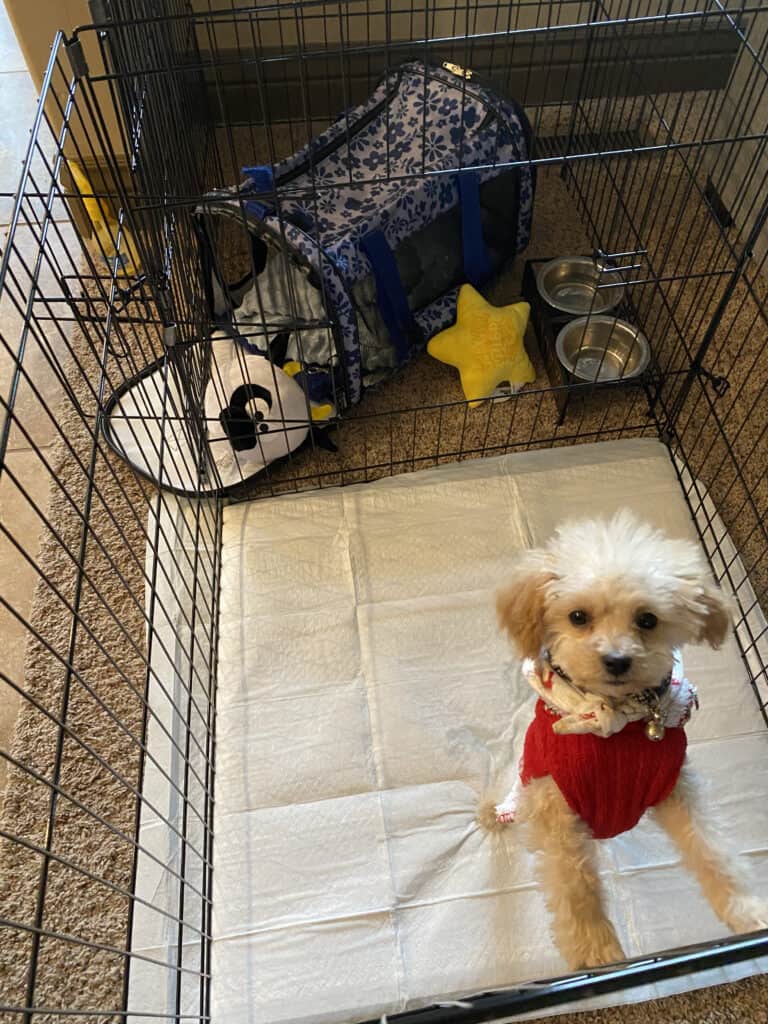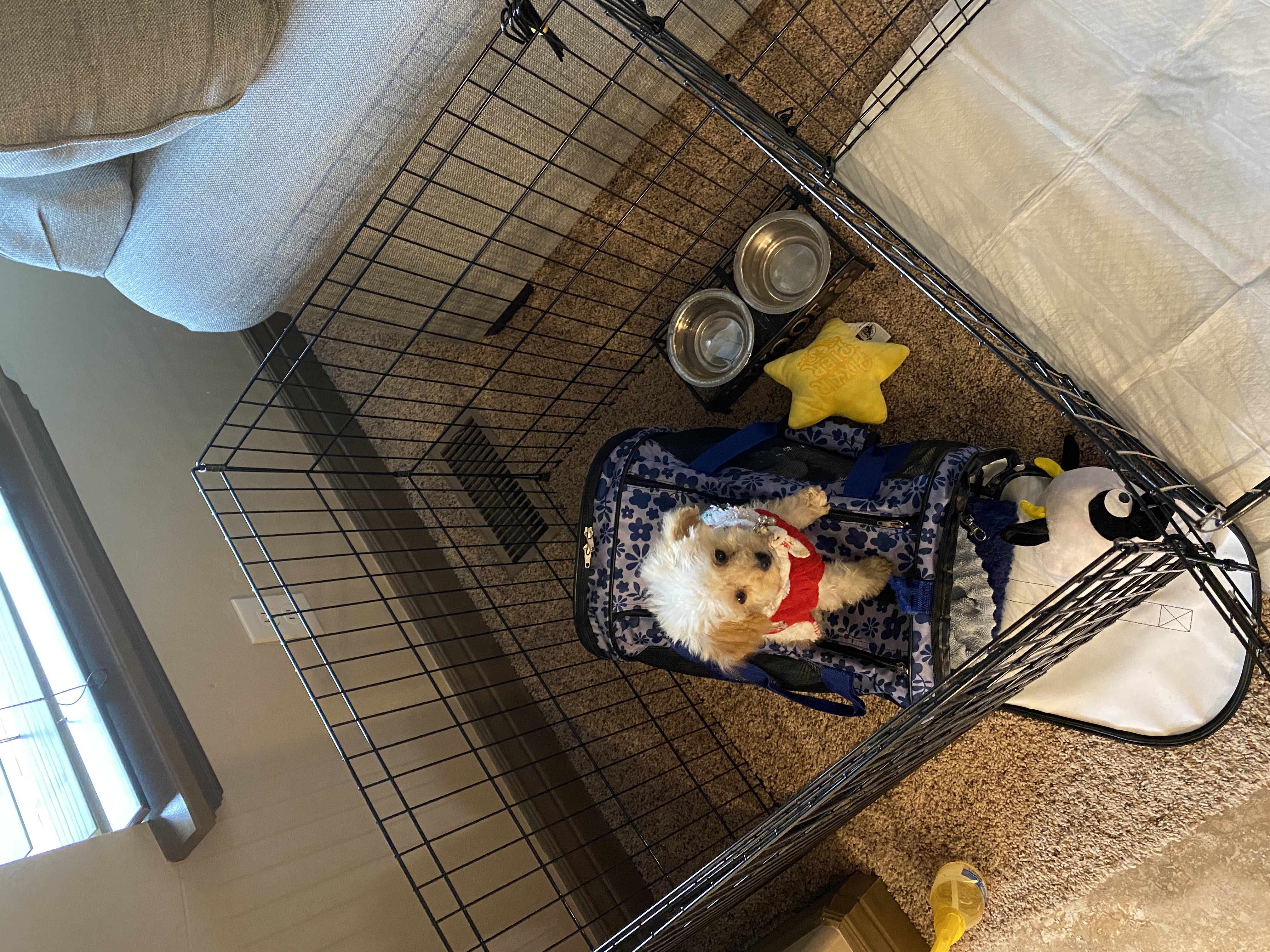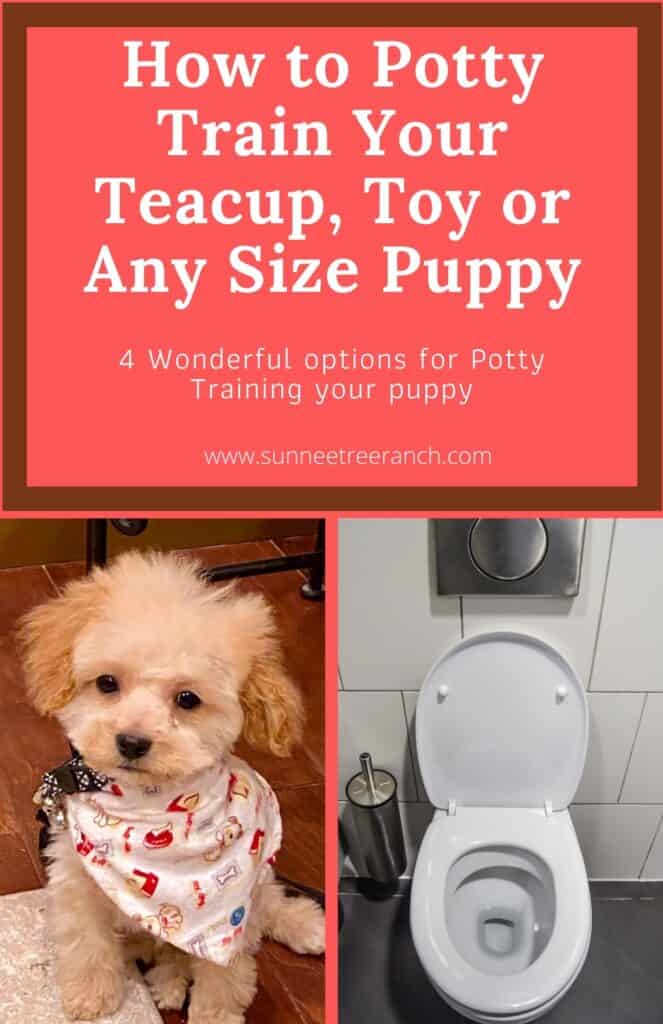
The Beginners Guide on Steps To Potty Training Your Puppy. We will give you several options to try as every dog and situation is different.
- We all want our puppies to just be potty trained already, right?! And oh how lucky we are when some seem to just come that way! My first dog kya she was so dang easy. It really gave me a false idea of what is was like to potty train a dog. She literally came that way. BUT every dog since nope! Some have not been so bad others have been SO HARD! that is until we learned the right technique for each dog.
- Like people they are different and learn in different ways. Below are several methods you can use to potty train a dog.
Option #1 How To Potty Train
Develop a feeding routine with your puppy. Try to feed him his meals at the same time each day and take him outside after every meal. puppies are easily able to recognize patterns of behavior so establishing a routine will make the process of training your puppy much easier. If you feed your puppy at the same time each day you will be able to predict when he will need to go out, however some puppies like my teacup poodle can pee A-LOT so keep that in mind. Also see our How Much to Feed Your Teacup Puppies article so you don’t over feed them.
Stay close to your puppy while you are at home and keep him in the same room with you at all times, in fact it is a great idea to Leash him/her to you. Yes I am serious, one it keeps them close to you always which they love and two they are less likely to pee right next to you, but if they do you can say in a loud voice and clap NO while they do it pick them right up and put them on the grass to finish or at least to know this is where we potty. If they do finish on the grass praise them, praise them, praise them!, By supervising your puppy you will be able to watch for signs that he/she has to go and take him/her outside before he has an accident in the house. Sniffing the ground and walking in circles are common signs that a dog has to go.
Take your puppy outside every hour or two, BUT if a teacup I would say every thirty minutes, and give him/her an opportunity to do their business. If your puppy does not need to go, take him/her back inside without giving them too much time to wander and try again 15/30 minutes later. If you can’t keep them with you put them in their small kennel. Dogs do not like to potty where they sleep. When you can take them out again take them from the kennel to the grass. I learned once dogs have memory or use their memory through the bottom of their paws. If they have been trained to pee on the grass then when their feet hit the grass they know its time to pee. I will get into how this worked for us once with one of my dogs farther down.
Praise your puppy excitedly every time he/she does his business in the yard. You may also reward your puppy with a small piece of food or with a physical reward such as a belly rub. Rewarding your puppy for good behavior is the best way to encourage them to repeat that behavior in the future.
Keep your puppy in a kennel overnight, make sure the kennel just fits the dog, you don’t want room to move around or the puppy will go pee in the empty space. In fact our teacup is so small we stuff the back of the kennel with a towel so he only has enough room to lay and sleep. No kennel is small enough for him and we even have a kitten kennel. During long absences by him/her in their it will help to teach him/her that they are capable of holding their urge to go. Puppies/dogs have a natural aversion to soiling their homes so if you keep your puppy/dog in a kennel overnight rather than letting them roam free, they’re less likely to have an accident.
Take your puppy outside right before and immediately after confining them to the kennel. Lead your puppy to the grass and give him a chance to do his business then reward him when he does so.
Take away your poodle’s water dish about one hours before bedtime to help reduce the chance that he needs to go during the night. Do not keep any food or water in the kennel with your puppy/dog.
4 THINGS YOU NEVER DO WHEN POTTY TRAINING A DOG
1. Rubbing the dog’s nose in accidents. This has been proven to make potty training more difficult.
2. Spanking or punishing your dog for going inside. Dogs don’t learn through punishments. If your dog does not know they are supposed to go outside and you punish them, you are only damaging the relationship you have with your dog.
3. Yelling at your dog for going inside. What you mean to say is “don’t potty inside.” What your dog learns is the human gets upset when you potty ANYWHERE. This will lead the dog to avoid letting you know it needs to go or refusing to go when you are there, which makes providing a reward impossible. If you catch your dog having an accident, it’s OK to make a sound — clap, drop a book, etc. — to interrupt them and stop it. Then immediately take the dog outside or to the designated place.
4. Failing to assign a consistent command word for the act of elimination.Many people mistakenly point to the yard and say the word “potty.” But if you haven’t taught your dog what the command word is, saying it first will accomplish nothing.
Option #2 How To Potty Train B
- Create a potty word ONE WORD use it every time they start to go to the bathroom in an excited voice. For example Potty, Tinkle, Bathroom, Go… What ever the word only use that word. You do will hear only the first sound and then over time associate that first sound with going to the bathroom. Never use that word mad or mean keep it a positive word.
- On a leash take the puppy outside to the desired pee area for example your lawn (we have a doggie door, so we take them to them door help them through until they figure it out then meet them outside and we grab the leash and walk them over to the spot on the lawn). Give him/her 5 minutes then let them sniff around to go to the bathroom. hang on to the leash you want to only give them that desired area to potty.
- Side NOTE…. Don’t say 100 times go potty, go potty, just like love and logic for your children you don’t say anything until the action is happening (for good things) so WAIT until your puppy starts going to the bathroom then while going to the bathroom say your key word one time in a happy calm voice, so they don’t stop going potty.
- If the puppy isn’t going after 5 minutes it’s to distracted and its not going to go at this point. So now take the puppy back inside BUT now the puppy needs to be held by you or back on a leash tied to you and goes every where you go. If you can’t take them with you then put them in the kennel. As stated above the kennel must only be big enough to sleep in. You don’t want it too roomy or it will find a corner to pee in and it will then curl up to sleep in the other corner. After 15/30 minutes try again! For a teacup I would say 15 minutes. Continue with this process until it goes to the bathroom.
- If the puppy DOES go potty while going to the bathroom say your key word one time in a happy calm voice, so they don’t stop going potty. Then when all done crouch down to their level and hand them a treat while saying the Special Word. This helps teach them look when I pee outside I can be rewarded and this is a good thing.
- After about a week you can now try taking the dog off the leash and walking with it outside to its potty spot. If the puppy goes on the grass in the spot you have trained it to go, say your word while it goes potty. Then after you give that puppy 3-5 treats (BUT as a TEACUP or MICRO only half a tiny treat and I mean tiny) and each treat you give it you say your Magic Word. This tells the dog they did a very good thing and should definitely do it again.
- If the puppy, say in my case, goes on the back deck/pee pad I will only give it 0 treat, while calming saying the “word”, but if it goes on the grass I will give him/her 3-5 (closer to 5) (HOWEVER if a TEACUP OR MICRO only half a tiny treat, you will make them very sick be very careful how much you feed your teacup or micro dogs!) to show them yep that definitely they right spot, while calmly saying the special “word”. If it goes potty in the house I won’t give them any treats. This will help the dog want to hold it so that they can go outside and get 5 treats. Make sure someone is always watching the dog so you know when it has gone and so you can reward it. This will go on for about two weeks.
- The times that your puppy most likely will need to go potty are right after waking up, 10/15 after eating, and 10/15 minutes after starting to play. A teacup and their tiny bladder will be multiple times while playing and even after eating until they learn control.
Option #3 How to PeePad Train Your Puppy
1. Potty training a new puppy can be difficult if you don’t know what to do, but there are several aids you can use to help your puppy go potty where you want it to go. Using potty pads (also called puppy pads, or pee pads) is one way to help teach your puppy where it is appropriate to use the bathroom. Consistency is key to this training technique, which you can then use to also teach your puppy to eventually potty outside.
2. The idea behind using a potty pad is to provide a visible, consistent area for your puppy to go potty. You’ll want to choose something that is absorbent, easy to clean up, and large enough for the messes that your specific puppy makes. Large breed dogs may need heavy duty options compared to toy breeds. Newspapers, paper towels, cloth towels, and store-bought pee pads or indoor/outdoor carpet potty stations are all options..
3. Newspaper and paper towels can be messy and difficult to clean up after your puppy potties on them, but they are inexpensive. Cloth towels are absorbent but will need to be washed regularly, and your puppy is more likely to try to chew on it like a blanket or toy. Store bought pee pads are the most popular option due to their absorbency, size options, and ease-of-disposal. If you plan to train your small dog to use the potty indoors, then indoor/outdoor carpet potty stations specifically designed for dogs are good options.
4. Introduce the puppy to the pad allow your puppy to see and sniff the potty pads you chose. This will help it get used to the new item so it isn’t scared of it at potty time. Let your puppy walk on the pad while you repeat a consistent command that you plan to say at potty time, such as “potty.”
5. While potty training your puppy, you’ll need to keep them close by so that you can anticipate when they are about to go potty, put them on a leash and attach them to you or put them in a kennel, don’t give them free roaming.
6. Puppies usually potty after sleeping, eating, drinking, and after playing. After your puppy does one of these things, you’ll want to pick it up about 15 minutes later and place it onto the potty pad in anticipation of it having to urinate or defecate.
7. If your puppy starts sniffing around on the ground instead of playing or chewing on a toy, this is a good indication that it needs to go potty. You’ll want to pick it up or walk them with the leash over and on to the potty pad if it starts doing this.
8. Your puppy may have to go potty every two to three hours. Get in the habit of taking your puppy to the potty pad every 15 minutes to 1 hour depending on your puppy breed.
9. If the puppy DOES go potty while going to the bathroom say your key word one time in a happy calm voice, so they don’t stop going potty. Then when all done crouch down to their level and hand them a treat while saying the Special Word. This helps teach them look when I pee outside I can be rewarded and this is a good thing.
10. After about a week you can now try taking the dog off the leash and walking with it to the peeped. If the puppy goes on the pad i, say your word while it goes potty. Then after you give that puppy 3-5 treats (HOWEVER with a Teacup or Micro only do a half a tiny treat) and each treat you give it you say your Magic Word. This tells the dog they did a very good thing and should definitely do it again..
11. If the puppy goes on the pad I will give him/her 3-5 (closer to 5) to show them yep that definitely they right spot, while calmly saying the special “word”. If it goes potty in the house I won’t give them any treats. This will help the dog want to hold it so that they can go on the pad and get 5 treats. Make sure someone is always watching the dog so you know when it has gone and so you can reward it. This will go on for about two weeks.
12. I saw this awesome idea about how to make a small peepad home for when you can’t be right with them and catering to them all the time. I bought this cage , you can find it on Walmart.com (it’s called Ktaxon Tall Wire Fence Dog Cat Folding Exercise Yard Play Pen Black). It is quite a bit bigger but I folded it tiny. I tried to fill his sleeping side with his kennel and food with little moving space (NO WE DON’T LEAVE HIM THERE ALL DAY!) I like this better than him zipped in a kennel when I can’t be with him. He hops right in the peepad side when he needs to go than climbs around, eats, or sleeps on the other side. It has worked great. Once he can let him self in and out through the doggie door he didn’t need this anymore but its also a good alternative when you leave some for a long time verses trapped in his/her kennel all day.


Option #4 Outside
- If you have a yard with grass this option will work and can be just what you need. If you do not have a fenced back yard this option will not be for you.
- So we had a dog years ago it didn’t matter what we did we (we didn’t know what we were doing) but basically when her paws hit the carpet she peed! it was like we had trained her to pee on the carpet. Well one day I was told a puppy trains its self where to pee by the feeling of their paw touching that surface. We were then told to undo that (she was 2 by this point) we had to leave her out side all day and kennel her at night. This would retrain her paws to send that signal to the brain oh grass is where I pee.
- Now do not just put them out and forget them!
- put her food and water out there with them but also go play out there with them. We also brought her in when we could be right with her and snuggled on her and played with her but most of the time she staid out side all day.
- At night put them in the kennel as describe above many times. Then in the morning right back outside.
- We did this for two weeks and guess what it totally fixed the problem. We had another dog that as a puppy we went with the same method and same thing it totally worked. Our other dogs we did one of the three options above.
Common Questions/FAQ About Teacup puppies
- Question 1 What and how to feed your teacup poodle
- Everything you need to know about feeding you tiny dog
- Question 2 Ringworm in dogs and what to do ASAP
- This is definitely something you want to learn to recognize and treat! It’s super contagious
- Question 3 How to potty train a bunny
- Yep, you can actually potty train your bunny! learn how to here
The Last Thing You Need to Know Is All Of These Methods Can and Do Work. Just Decide Which Will Be Best For You and Your Dog and Be Consistent, Patient and Kind.


